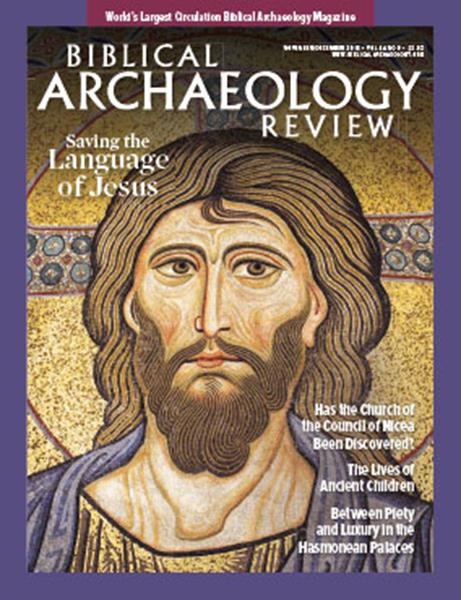Biblical Archaeology Review, November/December 2018

Features
Once spoken across most of the ancient Near East, Aramaic was most likely the mother tongue of Jesus. A considerable volume of Jewish literature is written in Aramaic, including parts of the Bible, Talmud, and Dead Sea Scrolls. Yona Sabar, a scholar and one of the last living native speakers of Aramaic, gives an account of the language and one of its peoples, the bygone Jews of Iraqi Kurdistan.
Off the shores of Nicea, archaeologists have uncovered a basilica, which stands over what appears to be an earlier church. Could this church be where the famous Council of Nicea first met in 325 C.E.?
What was it like to be a child in the ancient Near East? What role did they play in the household? How were they treated? Through texts and archaeological remains, we can reconstruct a picture of ancient children’s lives.
The Jewish dynasty of Hasmoneans ruled Judea for more than a century in the Late Hellenistic period. Their palaces, excavated in Jericho, reveal a great deal about how they lived. But what do the palace architecture and pottery tell us about the delicate balance the Hasmonean rulers tried to strike when projecting the power, wealth, and authority—both secular and religious—of their independent Jewish state to their Jewish subjects and foreign dignitaries?
